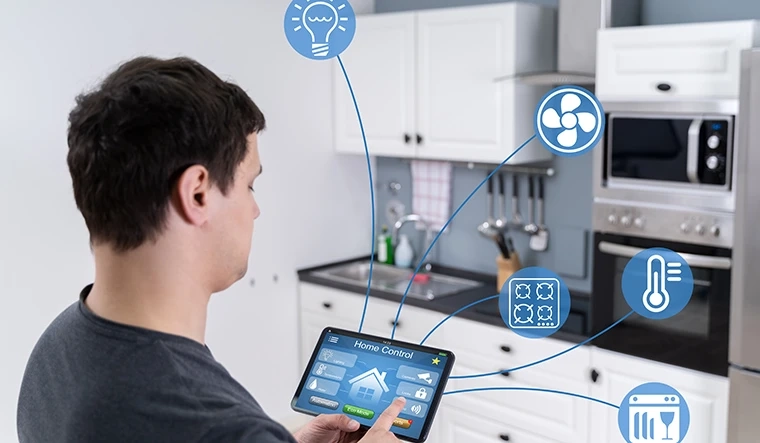Your smart home knows more about you than you think.
From voice assistants that remember your favorite playlists to security cameras that track every movement, smart home devices have redefined convenience. But with that convenience comes a critical question: Are your smart home devices spying on you?
If you've ever felt like your devices are listening in a little too closely—like when you talk about something and then see an ad for it—you're not alone. This isn’t just paranoia; smart devices collect and transmit vast amounts of data. And if you’re not careful, they could become gateways for cybercriminals.
The truth is, smart devices can be helpful and dangerous. So how do you protect yourself while enjoying their benefits? One smart move is educating yourself through a Cybersecurity course in Thane. But for now, let’s break down the threats and how to beat them.
1. Understanding the Risks of Smart Home Devices
What Data Are These Devices Collecting?
Smart devices—from smart TVs and thermostats to refrigerators and baby monitors—collect a surprising amount of personal data. These can include:
- Voice recordings (via smart assistants)
- Video feeds (via smart cameras)
- Device usage habits
- Location information
- Contact lists
- Health and fitness data
This information can help manufacturers personalize services, but it also makes you a prime target for hackers.
How Devices Can Be Compromised
Smart devices often have weak default passwords, outdated firmware, or unpatched security flaws. Hackers exploit these vulnerabilities to:
- Eavesdrop on conversations
- Access your home Wi-Fi
- Control devices remotely
- Record video/audio feeds without your consent
The infamous Mirai Botnet Attack in 2016 showed how insecure IoT devices could be used to launch massive cyberattacks. Imagine your smart doorbell being used in a global DDoS attack. Scary, right?
2. How Manufacturers and Third Parties Use Your Data
The Privacy Trade-Off
Many smart devices come with privacy policies written in dense legal jargon. Buried within them is your “consent” for the device manufacturer to collect, analyze, and even share your data with third parties—sometimes without you fully realizing it.
Here’s what that might mean:
- Voice commands sent to third-party servers
- Usage patterns shared with advertisers
- Location data sold to marketers
- Camera/mic data stored in the cloud
What’s worse, once your data leaves the device and enters the cloud, it’s subject to even more risks—especially if that cloud platform gets breached.
When Convenience Comes at a Cost
Sure, it’s cool that your smart fridge knows when you’re low on milk. But it’s not so cool if a hacker uses that same connectivity to get into your home network. Smart devices often share the same network as your computer, phone, and router, making them weak links in your cybersecurity chain.
3. Red Flags: Signs Your Smart Devices May Be Spying
Suspicious Behavior to Watch For
Sometimes your smart devices may exhibit signs that something’s off. Keep an eye out for these red flags:
- Devices lighting up randomly
- Background noise or interference during calls
- Changes to device settings without your input
- High data usage with no explanation
- Frequent device crashes or restarts
These could indicate unauthorized access or malware. Your device might even be part of a botnet without you knowing it.
Social Engineering Through Smart Devices
It’s not just about the device—it’s about you. Hackers are getting smarter by using data gathered through smart devices for social engineering attacks:
- Phishing emails tailored to your interests
- Fake support calls that reference your actual devices
- Voice mimicry using AI-generated deepfakes
4. How You Can Protect Your Smart Home
Smart Setup Starts with Smart Security
If you want to keep your smart home secure, it all starts with setup. Here’s a checklist to harden your devices:
- Change all default passwords (make them strong and unique).
- Use two-factor authentication where possible.
- Update firmware regularly.
- Disable unused features (like remote access).
- Turn off microphones or cameras when not needed.
Use a Dedicated IoT Network
One of the smartest moves you can make is to set up a dedicated network for your smart devices. This way, even if one gets compromised, it won’t provide access to your more sensitive devices like phones or laptops.
You should also:
- Monitor network activity using your router’s admin tools.
- Use MAC address filtering.
- Disable universal plug and play (UPnP).
- Invest in a router with advanced security features.
Conclusion: It’s Time to Take Back Control
Smart devices aren’t going anywhere—they’re becoming more advanced, more affordable, and more integrated into your daily life. But with every new device, you increase the number of doors into your personal space. Some of those doors may be wide open without you even realizing it.
Yes, your smart devices might be spying on you. But the good news is, you can fight back. With the right knowledge and tools, you can lock down your home, protect your privacy, and enjoy the perks of modern technology without the paranoia.
So, are you ready to take your privacy into your own hands?
Start your journey by enrolling in a ethical hacking courses in Thane. Whether you're a beginner wanting to learn the basics or someone aspiring to become a white-hat hacker, there's no better time to start.
💬 Have you ever experienced something weird with your smart home devices? Drop a comment below and share your story—we’d love to hear it!


